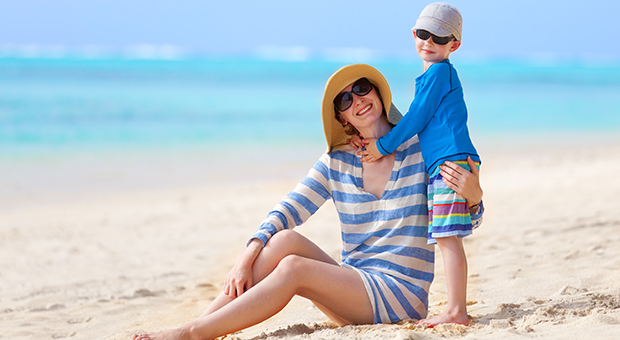The Medical Minute: Good sun protection comes in many forms

Just as most people know there is no such thing as safe smoking, there is also no such thing as safe sunbathing or tanning. Exposure to UVA and UVB rays can cause more than just a sunburn or tan – it can lead to everything from wrinkles to skin cancer.
“My general sense is that people are much more savvy about sun exposure,” said Dr. Colette Pameijer, a surgical oncologist and associate director of translational research at Penn State Melanoma and Skin Cancer Center.
But how do you know which sunscreen is right for you? And are there alternatives to slathering it on every couple of hours?
Sunscreen comes in lotions, sprays and different chemical formulations – some with and some without fragrance.
Unlike women, who are used to applying lotions, creams and moisturizers to their skin, many men shy away from sunscreen because they don’t like putting gooey or scented stuff all over themselves, Pameijer said. She suggests that guys try one of the many products designed for men that are now available.
Although sunscreen sprays make the process of protecting wriggling children easier, Pameijer advises adults to make sure the spray is actually hitting the skin and not blowing away in the breeze. “You want to make sure you are getting the coverage and protection you need,” she said.
Most sunscreens on the market offer broad spectrum protection from both UVA (ultraviolet A) and UVB (ultraviolet B) rays, but SPF (sun protection factor) values – which range from 2 to 100 – can be confusing.
The SPF number indicates how much longer, in minutes, that a product should allow you to stay in the sun without getting burned than you would without using it.
“I think what a lot of people don’t realize is that SPF is really a personal number,” Pameijer said. “The amount of protection that I get from an SPF 30 is different than what someone else with a different skin type would get.”
Minimum sun protection recommendations for the general population have increased from SPF 15 to SPF 30 in recent years, but Pameijer cautions against paying extra for SPFs beyond 55.
“You may end up paying a lot of money for diminishing returns, and it may lead to a false sense of security,” she said. “The product needs to be used correctly – reapplied every two hours – in order to work. If you pay a lot of money for a sunscreen and then use it sparingly, you’re not really getting the SPF you think.”
The bottom line?
“The best sunblock is one that you will wear, so find one you like,” Pameijer said. “If you have a reaction to one, try a different one.”
A great alternative for anyone who shies away from sunscreen is UV clothing, which has become available at mass retailers such as WalMart, Target, Costco and many sporting goods stores.
While a standard white T-shirt has an SPF of 3, most of the UV clothing on the market has an SPF between 30 and 50.
Unlike sunscreens, which need frequent reapplication – and which expire after a season or two – the clothing offers protection for as long as you are wearing it. Because much of the UV clothing on the market is made from bathing suit material, it can be worn in water.
The Medical Minute is a weekly health news feature produced by Penn State Health Milton S. Hershey Medical Center. Articles feature the expertise of faculty physicians and staff, and are designed to offer timely, relevant health information of interest to a broad audience.
If you're having trouble accessing this content, or would like it in another format, please email Penn State Health Marketing & Communications.
